Discover 11 hidden attractions, cool sights, and unusual things to do in Ulaanbaatar (Mongolia). Don't miss out on these must-see attractions: Choijin Lama Temple, Sükhbaatar Square, and The Fine Arts Zanabazar Museum. Also, be sure to include Mongolian Military Museum in your itinerary.
Below, you can find the list of the most amazing places you should visit in Ulaanbaatar (Ulaanbaatar).
Table of Contents
Choijin Lama Temple
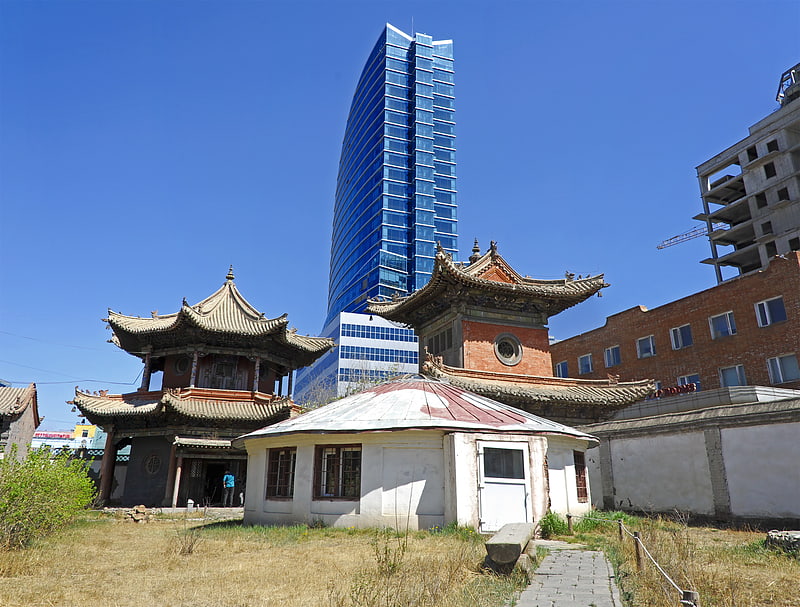
Also known as: Чойжин ламын сүм музей
Historic, art-filled Buddhist monastery. The Choijin Lama Temple is a Buddhist monastery in Ulaanbaatar, the capital of Mongolia.
The complex consists of six temples originally occupied by the brother of the ruler the Eighth Bogd Jetsun Dampa Khan, Choijin Lama Luvsankhaidav, who was the state oracle and 'Precious Wisdom and Clear Devotion' Khutugtu at the time. The complex was begun in 1904 and completed in 1908, in honor of the State Oracle Lama Lubsanhaidub /Losang Kedrup/, brother of the eighth Bogd Khan. The Choijin Lama Museum was originally a Buddhist temple complex, consisting of one main and five branch temples. It was active until 1937, when it was closed during the height of Communist repression against Buddhism and other religious traditions. In 1938 the complex was re-established as museum due to skillful efforts of wise people. This was how it was saved throughout communism.
The main temple features an 18th-century gilt statue of Buddha Sakyamuni with a statue of Choijin Lama Luvsankhaidav on the Buddha's right and the embalmed corpse of Baldan Choephel on his left. In addition, the temple boasts a copious collection of religious instruments, thangka paintings, silk embroideries, wood carvings, statues, and a biggest collection of cham dance masks).
The annex to the temple contains another temple, named 'Zankhang' and a central square in which Choijin Lama Luvsankhaidav performed Oracle trance rituals.
The Zuu Temple, dedicated to the Buddha Shakyamuni features papier-mache sculptures of Buddha in the past, present, and future. The 16 arhat disciples of Buddha appear on the temple walls with four Maharajas protectors shown sitting in caves on either side of the door.
The Yidam Temple was used as a place of prayer by Choijin Lama Luvsankhaidav, and therefore closed to the public. Now, it is open to public for sightseeing. In its center is a gilt bronze sculpture of one of the 84 Indian yogis, or Mahasiddha. Also depicted are the tantric gods Kalacakra, Mahamaya, Vajradhara and others with their shakti or consorts in postures of meditation that symbolize power and strength.
The fourth temple, the temple of amugulang or peace, is dedicated to the first Mongolian reincarnation of Boghda Jevzundamba, Undur Gegeen Zanabazar, (1635-1724).
- Choijin Lama Temple
Address: Jamiyan Gun Street, 14210 Ulaanbaatar
Sükhbaatar Square
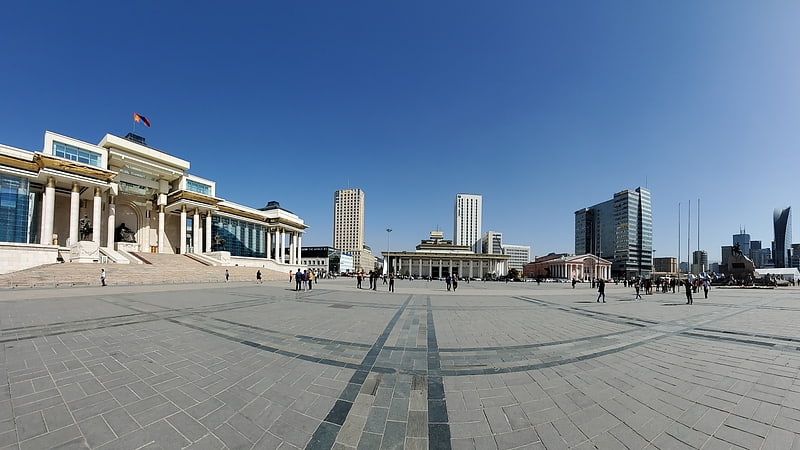
Also known as: Сүхбаатарын талбай
Central square with monuments. Sükhbaatar Square is the central square of Mongolia's capital Ulaanbaatar. The square was named for Mongolian's revolutionary hero Damdin Sükhbaatar after his death in 1923. The square's name was changed to Chinggis Square in 2013 in honor of Genghis Khan, considered the founding father of Mongolia, but the original name was restored in 2016. The center of the plaza features an equestrian statue of Damdin Sükhbaatar, while a large colonnade monument dedicated to Genghis Khan, as well as to Ögedei Khan and Kublai Khan, dominates the square's north face directly in front of the Saaral Ordon.[2]
Address: Peace Avenue, 210248 Улаанбаатар
The Fine Arts Zanabazar Museum
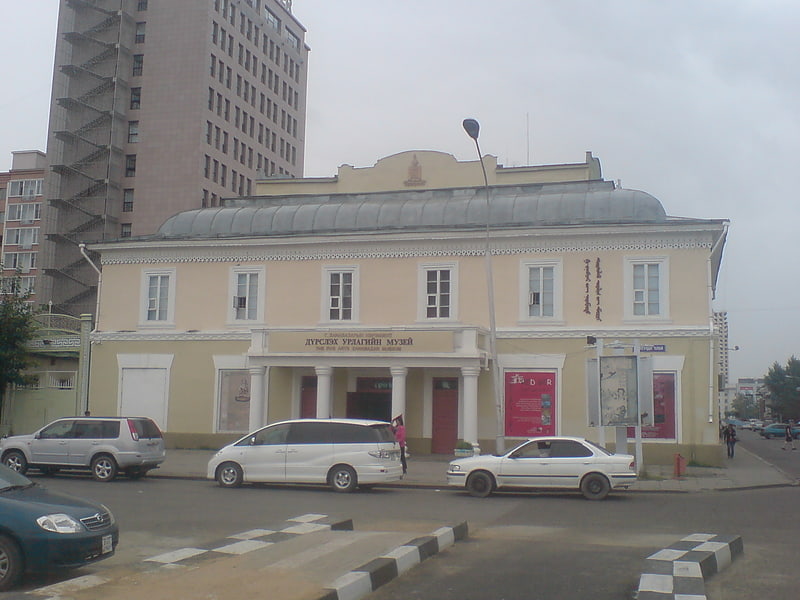
Museum in Ulan Bator, Mongolia. The Fine Arts Zanabazar Museum is an art museum located in Ulaanbaatar, capital of Mongolia, and founded in 1966. It exhibits collections of Mongolian masters of fine arts from the 18th to the 20th century and works in cooperation with the UNESCO for improving the presentation of its collections.[3]
Address: Sambuu St, Ulaanbaatar
Mongolian Military Museum
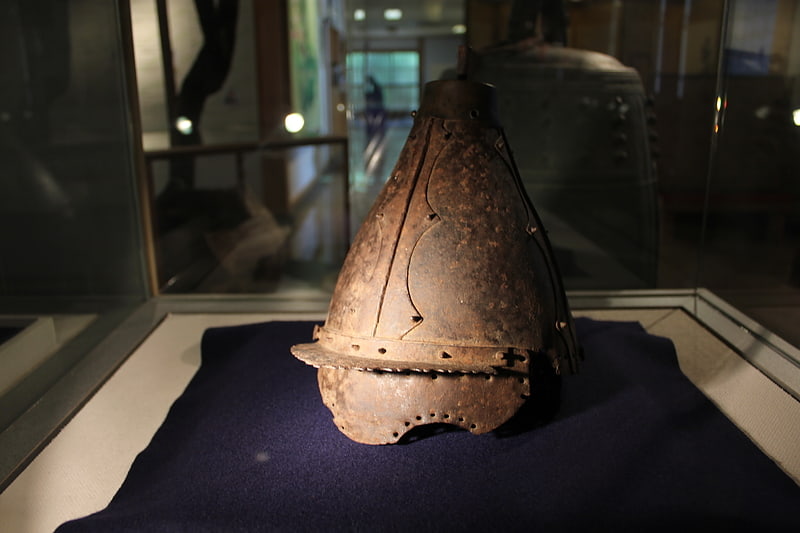
Museum in Ulan Bator, Mongolia. The Mongolian Military Museum also known as the Museum of the Mongolian Armed Forces, is located in northern Ulaanbaatar, Mongolia. It explains Mongolian military history dating back to the Mongol Empire. It is currently located across from an army barracks. The museum is part of the Ministry of Defense.[4]
Winter Palace of the Bogd Khan
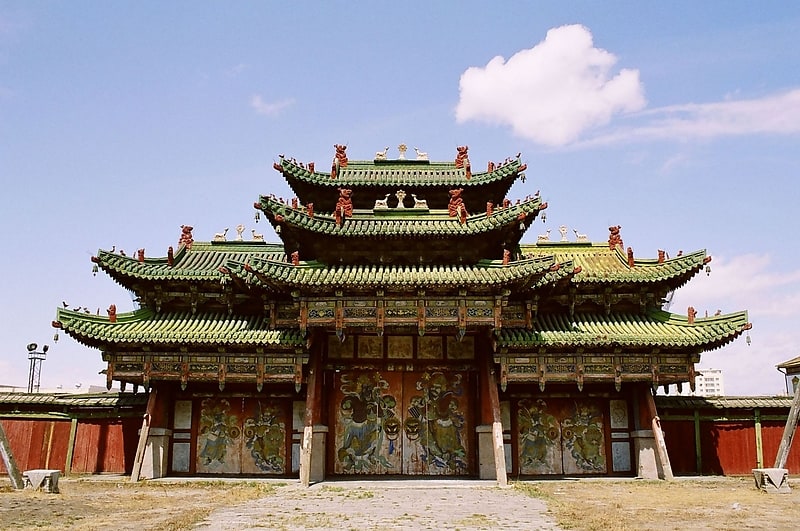
Also known as: Богд хааны ордон музей
Museum in Ulan Bator, Mongolia. The Winter Palace of the Bogd Khan, or the Bogd Khan Palace Museum, is a museum complex located in Ulaanbaatar, Mongolia. It was the Green Palace of the eighth Jebtsundamba Khutughtu, who was later proclaimed Bogd Khan, or ruler of Mongolia. Alongside being the oldest museum, it is also considered as one with the biggest collection in Mongolia. The palace is the only one left from originally four residences of the Bogd Khan.
Built between 1893 and 1903, the complex is one of the few Mongolian historical attractions which have neither been destroyed by the Soviets or the Communist forces. With the Winter Palace, the Gate of Peace and Happiness, the Cooling Pavilion as well as 6 temples, each containing Buddhist artwork, scripture and thangka, such as Naidan Temple and Makhranz Temple, the palace complex consists of a total of about 20 structures. The museum has about 8,600 exhibits and receives over 40,000 visitors annually. On display are many of the Bogd Khan's possessions, such as his throne and bed, his collection of art and stuffed animals, his ornate ceremonial ger, a pair of ceremonial boots given to the Khan by Russian Tsar Nicholas II, and also a jewelled regalia worn by the Bogd Khan's pet elephant. It currently runs its operations under the Ministry of Education, Culture, Science and Sports of Mongolia.[5]
Address: Bogd Javzandamba Street, Ulaanbaatar
National Museum of Mongolia
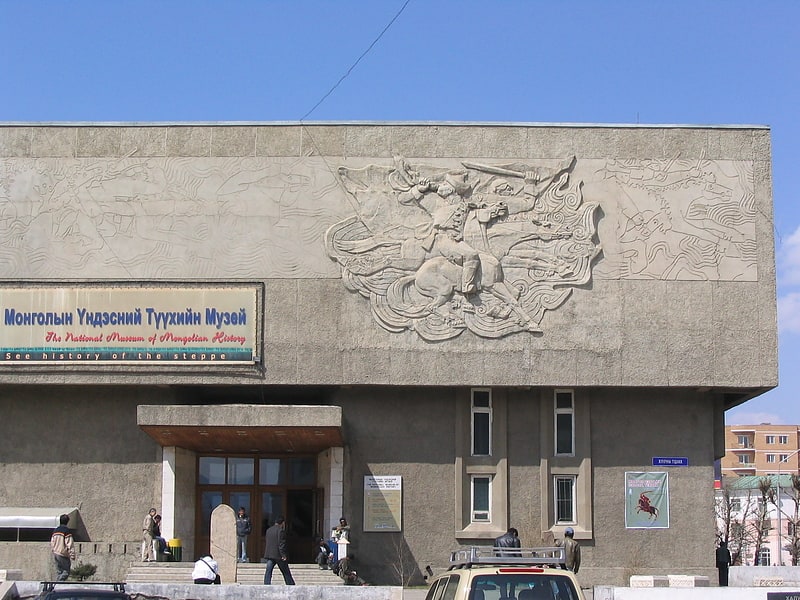
Also known as: Монголын үндэсний түүхийн музей
Mongolian history and culture museum. The National Museum of Mongolia, formerly the National Museum of Mongolian History, is located in Ulaanbaatar. It characterizes itself as "a cultural, scientific, and educational organization, which is responsible for the collection, care and interpretation of the objects".[6]
Address: Juulchin Street-1, 210146 Ulaanbaatar
Gandantegchinlen Monastery
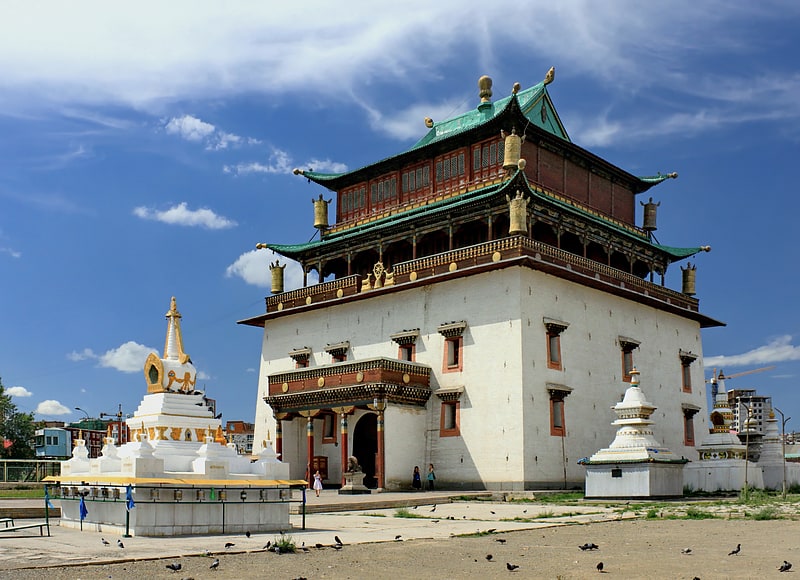
Also known as: Гандантэгчэнлин хийд
Monastery with temples and a giant statue. The Gandantegchinlen Monastery is a Mongolian Buddhist monastery in the Mongolian capital of Ulaanbaatar that has been restored and revitalized since 1990. The Tibetan name translates to the "Great Place of Complete Joy". It currently has over 150 monks in residence. It features a 26.5-meter-high statue of Avalokiteśvara. It came under state protection in 1994.[7]
National Academic Theatre of Opera and Ballet of Mongolia
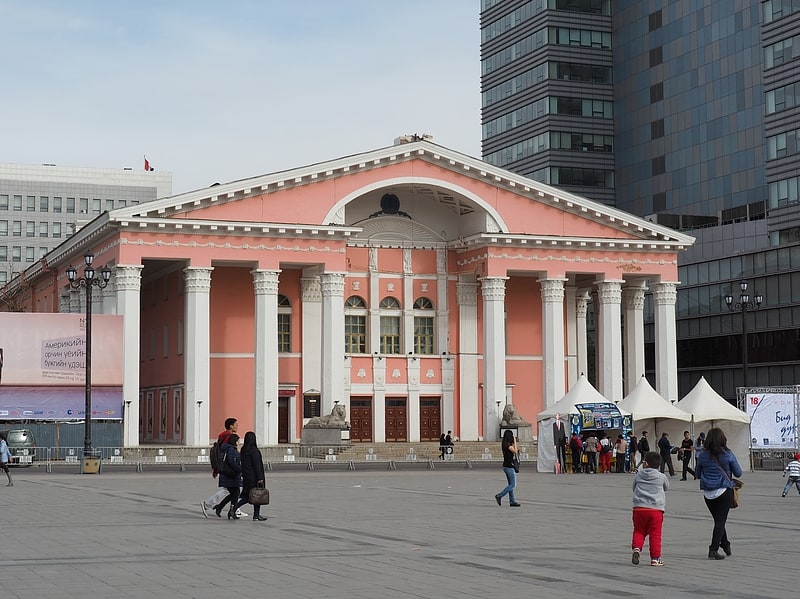
Also known as: Улсын дуурь бүжгийн эрдмийн театр
Theatre in Ulan Bator, Mongolia. The National Academic Theatre of Opera and Ballet of Mongolia was established on 15 May 1963 as the State Musical Drama Theatre was split into the State Academic Theatre of Opera and Ballet and the State Academic Drama Theatre upon the resolution 132/182 of 10 May 1963 by the Council of Ministers of the People's Republic of Mongolia and the Central Committee of Mongolian People's Revolutionary Party. The State Academic Theatre of Opera and Ballet held its opening ceremony on 18 May 1963 with Tchaikovsky’s Eugene Onegin.[8]
Address: Prime Minister A.Amar St, 14200 Ulaanbaatar
Mongolian People's Central Theatre
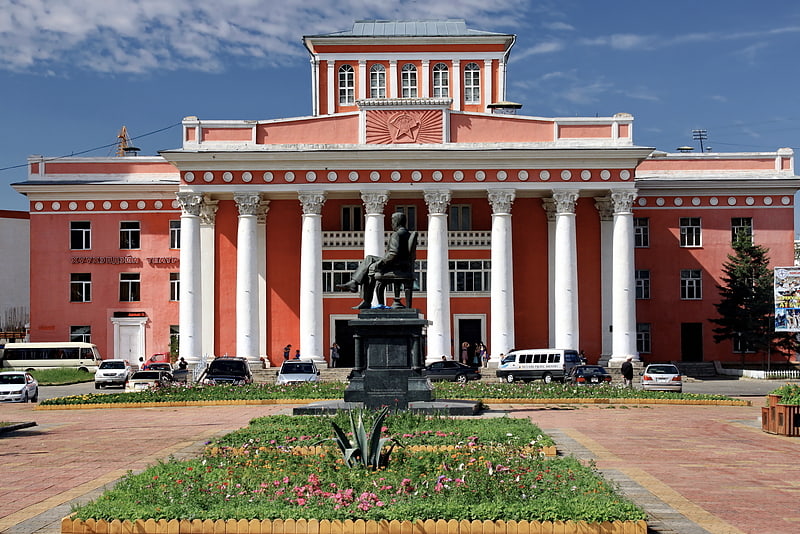
Theatre. The Mongolian People's Central Theatre is a theatre based in Ulan Bator, Mongolia. It was established on November 12, 1931.[9]
Museum of the History and Reconstruction of Ulan-Bator
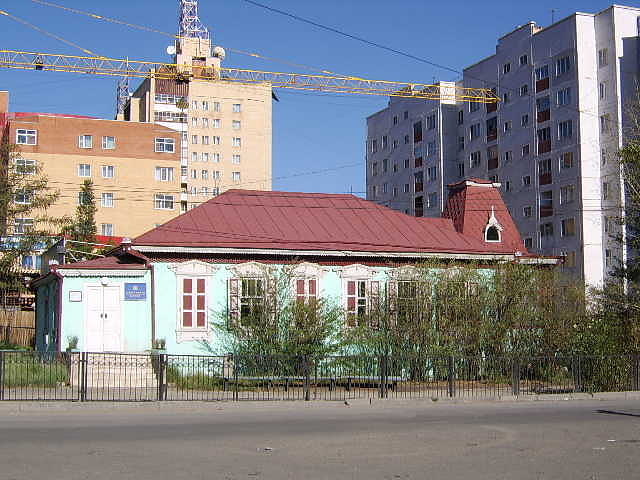
The Museum of the History and Reconstruction of Ulan-Bator is a museum dedicated to the history of Ulan-Bator, the capital of Mongolia. The museum building, a landmark of early 20th century Mongolian architecture, is located in Ulan-Bator, in the Düüreg of Bayanzürkh.[10]
Holy Trinity Church
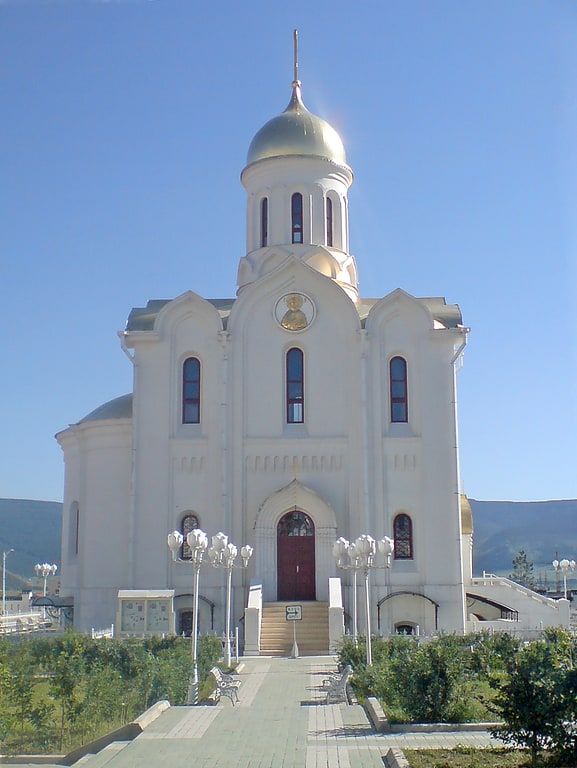
Building. The Holy Trinity Church also called Trinity Church is a Russian Orthodox church in Ulaanbaatar, capital of Mongolia; situated on Zhukova street, 55 - a, in Bayanzurkh District.
In 1860, as a result of the signing of the Convention of Peking, the Russian Empire was granted the right to open a consulate in Urga, the capital of Outer Mongolia. In 1863 the consulate staff with a convoy of twenty Cossacks came to Urga and opened its own building for the consulate that bound directly to the Orthodox Church in honour of the Holy Trinity. On 22 March 1864 it was sent the first priest who offered a religious service. This date is considered the beginning of the Holy Trinity parish of Russian Orthodox Church in Mongolia.
Since 1927, the church had no priest and was closed for religious use since it was used for other purposes. It was demolished in the 1930s. After the Mongolian Revolution of 1990, the local Orthodox church reemerged. In the summer of 2001 the foundation stone of a new temple in honour of the Holy Trinity was laid. Its construction began in 2005 and ended in 2009.[11]